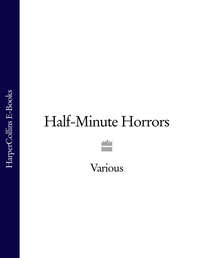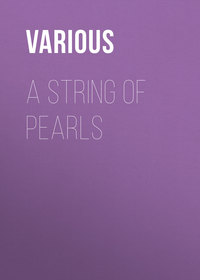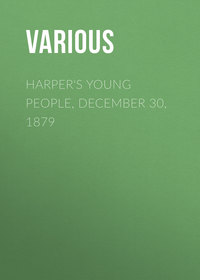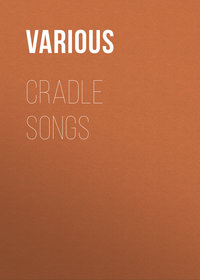![Birds Illustrated by Color Photography [January, 1898]](/covers_330/25570847.jpg)
Birds Illustrated by Color Photography [January, 1898]
Mamma, who found bird-life a delightful study, was only too willing to give the desired command, and thus it chanced that Mr. and Mrs. Wren grew quite accustomed to many pair of eyes watching them at their work of building a nest, every day.
“Do you know,” said Mrs. Wren, placing a particularly fine feather in the nest one day, “that I have a notion to name our birdlings, when they come out of their shell, after our landlady’s family? I think it is not more than fair, since we have got a cute apartment and no rent to pay.”
“A capital idea!” chirped Mr. Wren, “her children have such pretty names, too.”
“And pretty manners,” returned Mrs. Wren, who, being of such genteel birth, was quick to recognize it in others. “Let me see, there’s just six. Pierre, Emmett, Walter, Henry, Bobby, and that darling little fair-haired girl, Dorothy. I had my head tucked under my wing the other evening, but all the same I heard her speaking a piece that she said she had learned at school that day.”
“Yes,” said Mr. Wren, tilting his tail over his back and singing loudly, “I think we are very fortunate to have such a family for our neighbors. You can pick up so many things their mamma says to the children, and teach our birdies the same lessons, you know.”
“Of course,” said Mrs. Wren, standing on the edge of the pot and eyeing her work with great satisfaction, “I had thought of that before. I already have some of her sayings in my mind. But come, we musn’t be standing here chattering all day. The nest must be ready to-morrow for the first egg.”
“Hm! You don’t say?” replied Mr. Wren, beginning to count his toes, “why, bless me, to-morrow is the twelfth day. Well, well, how time flies when one is busy and happy,” and off they both flew, singing as they went for very joy.
[to be continued.]SUMMARY
Page 6.
CROWNED PIGEON.—Columbidæ goura.
Range – New Guinea and the neighboring islands.
Page 10.
RED-EYED VIREO.—Vireo olivaceus.
Range – Eastern North America, west to Colorado, Utah, and British Columbia; north to the Arctic regions; south in winter, from Florida to northern South America. Breeds nearly throughout its North American range.
Nest – Pensile from horizontal branches of trees, five to twenty feet above the ground; made of vegetable fibres and strips of pliable bark, lined with fine round grasses, horse hairs, and the like.
Eggs – Three or four, pure white, sparsely sprinkled with fine, dark reddish-brown dots, chiefly at the larger end.
Page 14.
FOX SPARROW.—Passerella iliaca.
Range – Eastern North America, west to the plains and Alaska, and from the Arctic coast south to the Gulf states. Winters chiefly south of the Potomac and Ohio rivers.
Nest – Of grass and moss, lined with grass and fine feathers; on the ground, concealed by the drooping branches of evergreens.
Eggs – Four or five, pale bluish green, speckled, spotted, and blotched with reddish-brown, or uniform chocolate brown.
Page 18.
BOB WHITE.—Colinus virginianus.
Range – Eastern United States; west to the Dakotas, Kansas, Indian Territory and eastern Texas; north to southern Maine and Southern Canada; south to the Atlantic and Gulf States.
Nest – On the ground, of grasses, straws, leaves, or weeds.
Eggs – Fifteen to twenty-five, often only twelve, but usually about eighteen, of pure white.
Page 23.
PASSENGER PIGEON.—Ectopistes migratorius. Other name: “Wild Pigeon.”
Range – Eastern North America, from Hudson Bay southward, and west to the Great Plains, straggling thence to Nevada and Washington. Breeding range now mainly restricted to portions of the Canadas and the northern border of the United States, as far west as Manitoba and the Dakotas.
Nest – In trees; a mere platform of sticks.
Eggs – Usually one, never more than two, pure white, and broadly elliptical in shape.
Page 27.
SHORT-EARED OWL.—Asio accipitrinus. Other name: “Marsh Owl.”
Range – Entire North America; nearly cosmopolitan.
Nest – On the ground in the matted grass of marsh land, of a few sticks, soft grasses, and some of its own feathers.
Eggs – Four to seven, white, and oval in shape.
Page 31.
ROSE COCKATOO.—Cacatua Leadbeateri.
Range – South Australia.
Nest – In holes of decayed trees, or in fissures of rocks.
Eggs – Two, of pure white.
Page 35.
MOUNTAIN PARTRIDGE.—Oreortyx pictus. Other name: “Plumed Partridge.”
Range – Pacific coast from San Francisco north to Washington.
Nest – On the ground, consisting of a bed of dead leaves, under a bush or tuft of grass or weeds.
Eggs – Six to twelve, of a cream color with a reddish tint.









